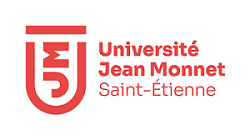Continuum models of femtosecond laser ablation
Résumé
The aim of this chapter is to provide a basic introduction to the principles that lay the foundation for established approaches that treat matter as a continuum model, in order to describe and comprehend the aspects of laser–matter interactions. The chapter starts with a consideration of the relevant processes induced in solids under laser irradiation and a description of continuum models successfully applied to quantify the laser heating and subsequent ablation processes. We intend to focus on a critical assessment of the used approaches with a clear perception of their advantages and limitations. The drift-diffusion approach of laser-induced material charging and its eventual disintegration are considered as examples. The time and length scales of its application in describing laser-induced modifications for different classes of materials are analyzed and further improvements are also discussed. In the final part of the chapter, we give a short overview of laser–solid interaction phenomena, which could be treated with continuum models, and present a number of examples too.

